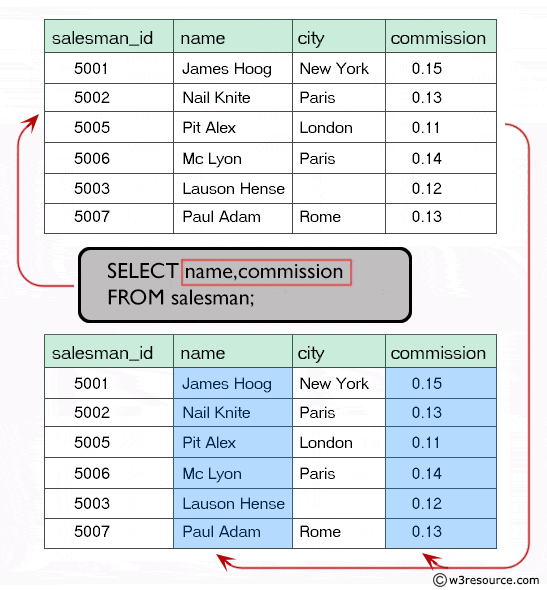
How to Selectively Exclude a Single Column in SQL Queries
The Art of Omission
In the vast expanse of data lakes and relentless queries, there come times when we seek to scrutinize specific relationships while excluding irrelevant columns. In this guide, we embark on an exploration of SQL’s intricate mechanisms to selectively omit a single column, a skill that can streamline your analytical endeavors and unlock deeper insights.
Unveiling the EXCLUDE Clause
The EXCLUDE clause serves as a potent tool in our arsenal of SQL commands. It allows us to explicitly exclude a column from the query’s output, thereby narrowing our focus and enhancing clarity. The syntax for employing the EXCLUDE clause is as follows:
SELECT * EXCLUDE column_name
FROM table_name;By specifying the column_name within the EXCLUDE clause, we effectively instruct the database to omit that particular column from the query results. This exclusion process can be particularly valuable when working with large datasets, as it enables us to retrieve only the essential information, reducing both processing time and data clutter.
Extending Our Knowledge: The NOT IN Operator
Another technique for selectively excluding a column is through the NOT IN operator. This operator compares values in a subquery to those in a specified column and returns rows that do not match. To employ this approach, we utilize the following syntax:
SELECT *
FROM table_name
WHERE column_name NOT IN (
SELECT column_name
FROM subquery
);In this scenario, the subquery serves to define the values that we wish to exclude from the primary query. By leveraging the NOT IN operator, we craft a query that retrieves all rows except those where the column_name matches the values specified in the subquery. This approach provides a flexible way to filter out specific data points based on predefined criteria.
Expert Tips for Refined Exclusion
1. Harness the Power of Negation:
When working with boolean values, the NOT operator can prove incredibly useful. By negating the value of a column, we can effectively exclude rows where that column is set to true. This technique offers a straightforward way to filter out specific conditions.
2. Utilize Conditional Exclusions:
The CASE statement grants us the flexibility to apply conditional logic to our exclusion criteria. By incorporating conditional statements within the EXCLUDE clause, we can dynamically determine whether or not to exclude a column based on specific parameters. This capability empowers us to craft highly tailored queries that meet our precise analytical needs.
FAQ on Selective Exclusion in SQL
Q: What is the difference between EXCLUDE and NOT IN?
A: EXCLUDE explicitly omits a column from the query results, while NOT IN filters rows based on a specific set of values.
Q: Can I exclude multiple columns using the EXCLUDE clause?
A: Yes, you can exclude multiple columns by listing them as a comma-separated list within the EXCLUDE clause.
Q: How can I dynamically exclude columns based on user input?
A: By employing a CASE statement within the EXCLUDE clause, you can dynamically evaluate user input and toggle column exclusion accordingly.
Conclusion
Mastering the art of selective exclusion in SQL queries empowers us to streamline our analytical processes and extract precise insights from vast datasets. By leveraging the EXCLUDE clause and the NOT IN operator, we gain the ability to surgically remove irrelevant columns, enhancing the readability and efficiency of our queries. Whether you are a seasoned data analyst or a budding SQL enthusiast, embrace these techniques to unlock the full potential of your data exploration endeavors.
Are you eager to dive deeper into the realm of selective exclusion in SQL? Reach out to our expert team today, and let us guide you on your journey toward data mastery.

Image: www.w3resource.com

Image: brokeasshome.com
How To Select All Columns In A Table Sql | Brokeasshome.com SELECT ‘SELECT ‘ + @ColumnsOut + ‘ FROM ‘ + QUOTENAME(@SchemaName) + ‘.’ + QUOTENAME(@TableName) Execution: This outputs a SELECT statement for all columns, excluding the ones supplied in @ExcludeColumns, which is a comma-separated list of column names to exclude. Thank you so much for the statement!